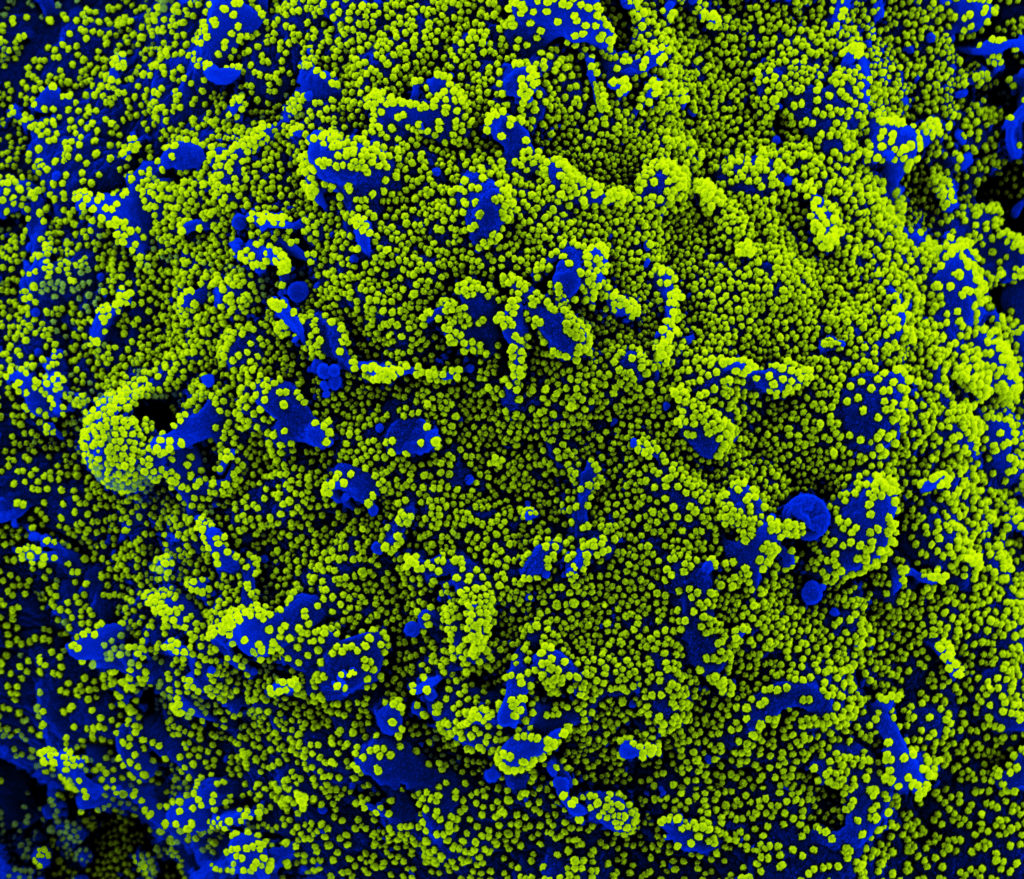Ignoring the risks of Long Covid and taking no ongoing measures to prevent the spread of the SARS-CoV-2 virus is a bad proposition.
The Covid-19 pandemic has been declared “over” at least four times in the last 2 years.

The first time it ended was in Summer 2020. Then it ended in Summer 2021. It also ended in Fall 2021. And then again last month. Next month it’ll likely be over once again, because as the time between new Covid-19 variants seems to decrease, so too does the time it takes for politicians or the press to declare the most recent wave the “final” wave.
While everyone, myself included, wants this pandemic to be over, and while pandemic fatigue and frustration are real, the one thing we can probably say with near certainty about the ongoing Covid-19 pandemic is that despite what we may want it’s not going away.
As the phrase goes: “We may be done with the pandemic, but the pandemic is not done with us.”
Pandemic Gaslighting
Only days after the first Omicron variant wave peaked earlier this year and Covid-19 faded from the headlines, a statistical mirage that the virus was now “mild” became cemented, and we raced to embrace the belief that the novel coronavirus was becoming as benign as a cold. Understandably, many if not most Americans quickly returned to pre-pandemic routines without much worry.
Events only magnified the feeling that the pandemic, this time, was finally over. In mid-April a Federal Judge in Florida struck down the CDC’s public transportation mask mandate as unlawful, and while epidemiologists expressed dismay at this news the public interpreted it as a cause for celebration: it reinforced the desire for the threat to have finally passed.

Then, only a week later, Dr. Fauci went on the PBS Newshour and told the nation the pandemic was effectively over, only to almost immediately try and walk back the comments. By the following week Fauci was privately expressing alarm that no one was caring about virus mitigation anymore.
Since Dr. Fauci made his original statement on April 26, Covid-19 cases have been steadily rising again on the East Coast despite relatively high vaccination rates. Hospitalizations numbers in New Jersey and New York are also eerily starting to mirror the Fall 2021 Delta wave, albeit with lagging deaths.
While this current wave may continue to grow, or it may be short-lived—flip a coin—recent research has found that this new wave of Omicron-based variants has the ability to break through existing immune protections, putting most American at renewed risk of a Covid-19 infection.
With few now wearing masks indoors despite CDC mask guidance, and many in the press talking once again like the pandemic is behind us, this current Covid-19 wave is also very different from past waves.
Long Covid is Now Real, Widespread, and Challenging to Prevent
One of the things that has changed is our understanding of the threat. This wave comes as a preponderance of evidence has emerged in recent weeks about the effects of Long Covid on the general population.

Long Covid, whose symptoms can range from brain fog, to fatigue, to feeling like you have an electric toothbrush stuck in your chest, is now estimated to have affected one in five people with confirmed Covid-19 infections. In most cases, Long Covid was preceded by only a mild infection, and it may impact up to 20% of young people and 25% of seniors. It’s also now understood that having a prior Covid infection at any level of severity may put you at increased risk of diabetes, kidney problems, stroke, or crippling fatigue.
Maybe most alarmingly of all, Covid-19 appears capable of causing damage to the nervous system. While the virus was already understood in some academic circles to have neurotoxin-like properties, recent research found that people who experienced a loss of smell did so, in-part, because of a measurable loss in brain gray matter often due to only a “mild” covid infection.
The cognitive effects of severe Covid-19 are even worse, and some were found to have lost the equivalent of 10 IQ points due to their infection. These game-changing developments have gotten surprisingly little press coverage.
Other reports found that the existing vaccines offer little-to-no protection against Long Covid, meaning that any of us are capable of getting Long Covid even if we are “fully vaccinated”. The only way to reliably prevent Long Covid, it appears, is to not get a Covid-19 infection.
These new studies suggest that the single greatest source of harm from the ongoing Covid-19 pandemic may not be from deaths directly caused by Covid pneumonia, but from symptoms that may takes weeks to materialize after an initial infection.
The Virus is Still Evolving Unpredictably
As we learn more about the immune-evading properties of COVID-19, the virus is becoming exponentially more contagious with each wave and is already approaching the transmissibility of measles. It is also mutating to such an extent that it’s possible that within a few months there may not be “waves” of Covid more than there will be something resembling a persistent flood.

In cases where Long Covid sufferers died during their infection, researchers also recently found evidence of active viral infections throughout the body, including in their brain; infections that had continued for months after the original infection. In these cases, patient’s Long Covid symptoms may not have been caused by lingering after-effects from a successfully-fought infection, but instead by a persistent coronavirus infection.
The potential for a SARS-CoV-2 infection to last indefinitely is already a known risk for people with compromised immune systems. The rapid evolution of this virus is attributed to the documented ability of the virus to use immunocompromised people’s weakened immune systems to accelerate its evolution. That long-lasting infections may be at least partially responsible for Long Covid symptoms is not a trivial development: it should cause a change in the way we assess the risk from this virus.
Given what we now know about the symptomology of Long Covid, it does not seem outside the realm of possibility that the SARS-CoV-2 could evolve into an even greater threat. Some scientists feared in the early days of the pandemic that the virus may behave more like HIV than the common cold. While Covid is currently a pale imitation of HIV, the novel coronavirus has only gotten better at evading human immune response with time, and there is every reason to think the virus will continue to refine its skills on this front.
There is nothing in the laws of nature which require a COVID-19 infection to end 10 days after an initial onset of symptoms or even 30 days. There is also nothing in the laws of nature that requires the SARS-CoV-2 virus to take an evolutionary path where it becomes as benign as the common cold.
Virus Control is Now the Only Logical Option
As with many of the problems we face as a society, the solution to Covid-19 is available to us at relatively little cost, so-long as we deal with the problem in a timely manner.

We can spend money and pass laws to normalize effective masking (i.e. N95 and KN94 masks) and require the installation of anti-viral ventilation and lights in indoor public spaces, or we can do nothing and risk having a vast minority of working age American adults suffer from disability and ongoing health problems; health problems which can include impotence.
Not to be flippant, but if the increased risk of diabetes, kidney problems, stroke, crippling fatigue, and nerve damage are not enough to trigger sensible risk mitigation measures, shouldn’t the fear of Covid-induced bedroom problems be sufficient in and of itself?
The argument that this virus will become less of a threat if only we let it travel wherever it wants, and let it do whatever it wants, is dangerous. “Living with the virus” responsibly requires us taking active and ongoing measures to control SARS-CoV-2, like we have done with HIV: we can only truly live with this virus if we actively work to contain it.
That the only two anti-viral pills approved to treat Covid-19 now appear to be either flawed or potentially dangerous, and that current vaccines may prove to be ineffective against new variants only adds to the risk of complacency.
Coda

This pandemic is occurring in an unprecedented era of global travel, allowing any new variant, anywhere in the world, to spread to any other corner of the globe almost overnight. Unless improved countermeasures are taken to identify and stop new variants before they spread everywhere we are putting our health and well-being in the belief that unpredictable viral mutations will somehow keep us safe. The strategy of doing nothing, and hoping the virus morphs into the common cold, is extremely risky and unproven.
There is still enormous cause for optimism: we now have an understanding of the health problems caused by Covid-19 and we have solutions to prevent them. But if we fail to respond appropriately to this real and ongoing threat, the price we’ll pay for inaction and indifference may be quite steep.
September 2022 Update: The pandemic is finally over… for the fifth time. No more mask mandates either.
